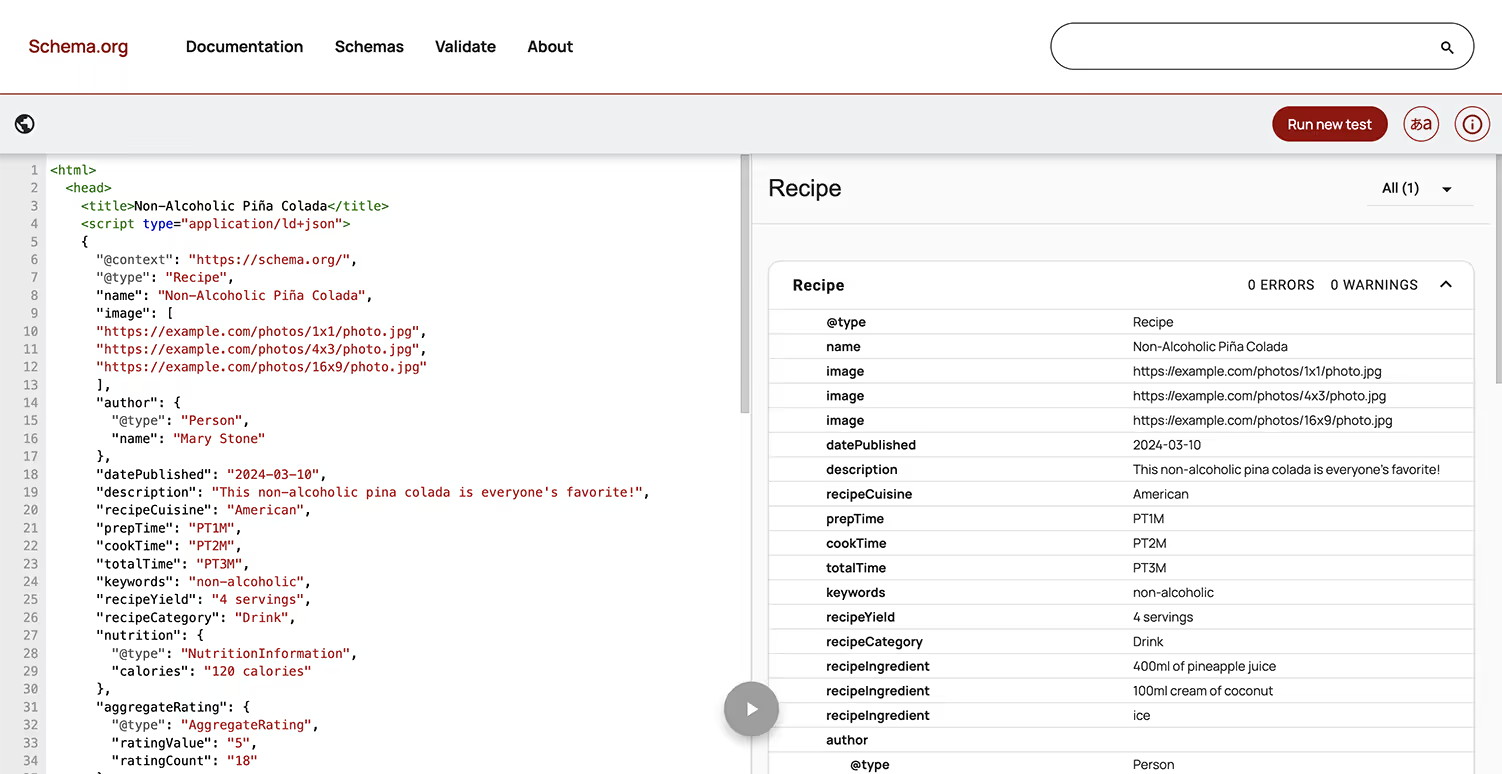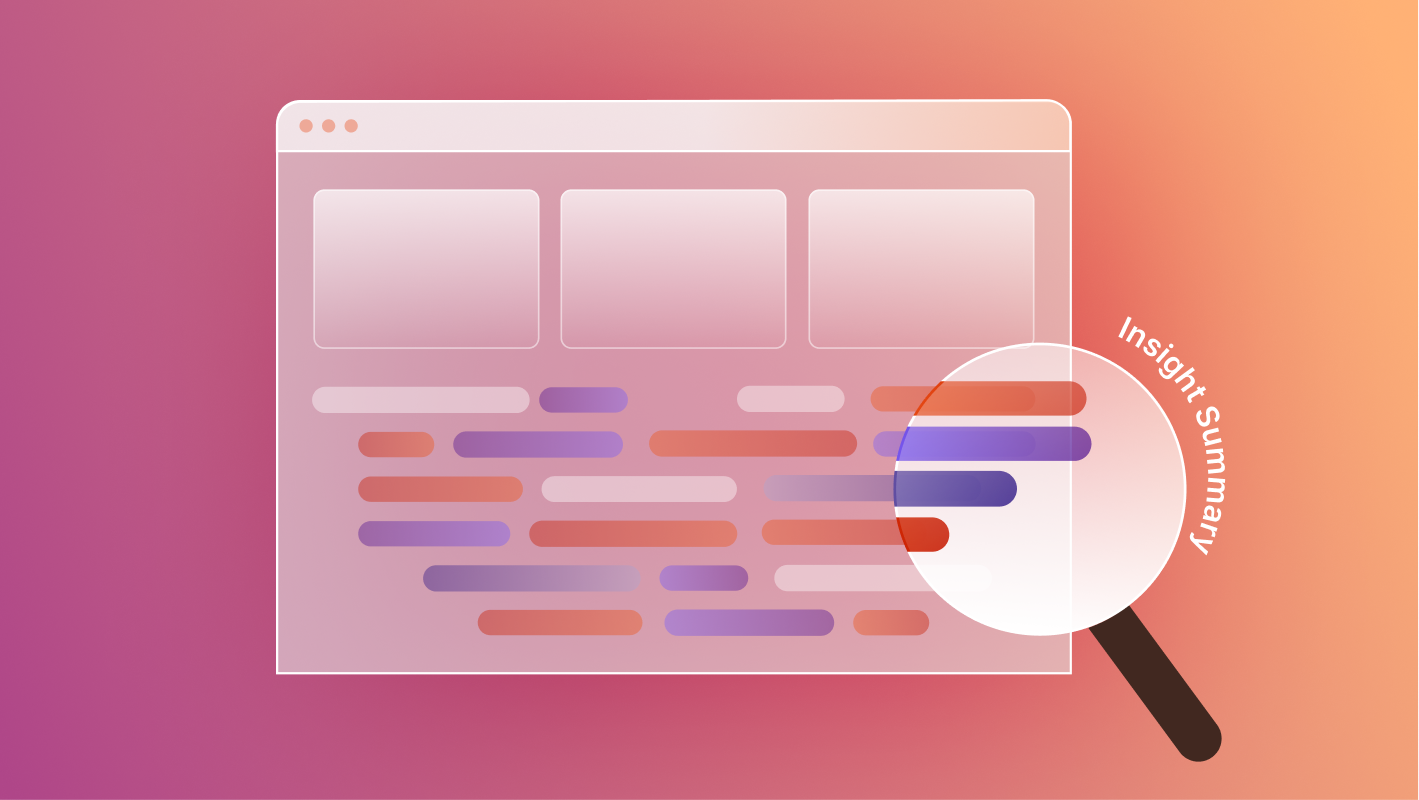If you’ve ever seen a recipe with star ratings show up on Google, or a product page that displays pricing and stock right in the search result, you’ve seen schema markup in action. But these days, schema isn’t just for SEO. It’s a foundational element of designing sites that AI tools can understand.
What Is Schema Markup?
Schema markup is a type of structured data that helps machines interpret your website content. It’s a standardized vocabulary (created by Schema.org and backed by major search engines) that adds meaning to your HTML—essentially labeling your content so both search engines and AI agents know what it is.
Why Schema Matters for SEO and AX
Search engines use schema to enhance search results with rich snippets like images, prices, ratings, and more. But increasingly, AI systems (like Google’s SGE, ChatGPT browsing, or custom GPTs) rely on schema to understand what your site offers and how it’s structured.
This makes schema a key component of AX (Agent Experience). Just like accessibility helps screen readers parse your site, schema helps AI agents scan, summarize, and even act on your content.
Without it, your site is a black box. With it, it’s a labeled map.

Where Schema Markup Helps Most
Some types of schema are more common (and more useful) than others, especially if you're trying to optimize for both search and agentic interaction:
- Product – Use for ecommerce pages. Include name, price, availability, reviews, etc.
- Article – For blogs, guides, and insights. Add author name, date published, headline, and description.
- FAQPage – Great for expanding your reach in both search and AI-powered answers.
- LocalBusiness – Adds key business details like address, hours, and location coordinates.
- BreadcrumbList – Helps agents understand your site hierarchy.
- Event – For webinars, meetups, or launches.
- WebPage – General metadata about the page type, title, and URL.
JSON-LD Is Your Friend
While there are multiple ways to add schema (microdata, RDFa), Google recommends JSON-LD because it’s cleaner, easier to manage, and doesn’t interfere with your HTML structure.
Here’s what a simple schema might look like for a blog post:
<script type="application/ld+json">
{
"@context": "https://schema.org",
"@type": "BlogPosting",
"headline": "Schema Markup 101: Make Your Site Machine-Readable for SEO and AI Agents",
"author": {
"@type": "Person",
"name": "Callum Griffith"
},
"datePublished": "2025-08-27",
"publisher": {
"@type": "ProfessionalService",
"name": "Composite Global",
"logo": {
"@type": "ImageObject",
"url": "https://www.composite.global/images/logo.png"
}
}
}
</script>
This Means:
- @context: Tells search engines that this data uses the Schema.org vocabulary, which is the standard language for structured data.
- @type: Identifies what kind of content this is. In this case, "BlogPosting" tells AI tools and search engines that this page is a blog post.
- headline: The title of the blog post as it appears on the site.
- author: Specifies who wrote the post.
- @type: "Person" indicates that the author is an individual (as opposed to an organization).
- name: The full name of the blog author.
- datePublished: The exact date the article was first published, helping agents understand its freshness.
- publisher: Describes the organization that published the article.
- @type: "ProfessionalService" communicates that this is a service-based company, like a design or web development agency.
- name: The name of the company or brand behind the post.
- logo: A nested object providing the logo for the organization.
- @type: "ImageObject" clarifies that this is an image.
- url: A direct link to the logo image file, ideally square and high-resolution.
How to Implement Schema Markup in Webflow
Adding schema markup to your Webflow site is simple and powerful. Here's how to do it:
- Create Your JSON-LD Code
Use Google’s Structured Data Markup Helper or a tool like Schema.dev to generate your structured data. Make sure to choose the correct @type (e.g., ProfessionalService, Article, Product) and fill in the relevant fields.
You can also use LLMs tools like ChatGPT to generate your schema, just be sure to validate and double check everything as these models can make mistakes (and frequently do). - Copy the JSON-LD Snippet
Once your code is generated, copy the entire JSON-LD script (it should begin with <script type="application/ld+json"> and end with </script>). - Paste into Webflow
In Webflow:
Go to the page settings of the page you want to add schema to.
Scroll down to the Custom Code section.
Paste the JSON-LD code into the Footer Code area. (You can also use the Header section if you prefer.) - Publish Your Site
Schema won’t take effect in preview mode. You’ll need to publish your site to test the implementation. - Test Your Markup
Use Google’s Rich Results Test or Schema.org’s validator to confirm everything is implemented correctly.

Common Pitfalls to Avoid
- Missing required fields – Google may ignore your schema if it’s incomplete. Each schema type has different requirements.
- Mislabeling content – Don’t add “Product” schema to your About page. It confuses crawlers.
- Over-optimizing – Cramming your page with schema types that don’t match the content can do more harm than good.
- Forgetting to validate – Use Google’s Rich Results Test or Schema Markup Validator to make sure it works.
The Intersection of Schema, Accessibility, and AX
What’s good for one machine is often good for others.
Many best practices for accessibility (clear hierarchy, labels, ARIA roles) are the same principles that power both SEO and AX. The more structured and intentional your content is, the easier it is for everyone, humans and machines, to navigate it.
When LLMs crawl your site, they benefit from schema just as much as Googlebot does. Tools like llms.txt help control what agents can access, but schema tells them how to interpret what they find.
Final Thoughts
Schema markup isn’t just for marketers or devs—it’s for anyone who wants their site to be understood by the modern web. Whether you’re trying to win search results, feed AI co-pilots, or future-proof your content, schema is the bridge between what you publish and how it gets used.




.svg)

.svg)











